Volume 24, Issue 2
Displaying 1-8 of 8 articles from this issue
- |<
- <
- 1
- >
- >|
Special topics: Recent perspective of electroconvulsive therapy—10 year's progress after introduction of pulse wave ECT in Japan—
Overview
-
2012Volume 24Issue 2 Pages 106-109
Published: April 15, 2012
Released on J-STAGE: December 16, 2015
Download PDF (377K)
Original article
-
2012Volume 24Issue 2 Pages 110-117
Published: April 15, 2012
Released on J-STAGE: December 16, 2015
Download PDF (645K)
Overview
-
2012Volume 24Issue 2 Pages 118-126
Published: April 15, 2012
Released on J-STAGE: December 16, 2015
Download PDF (937K)
Original article
-
2012Volume 24Issue 2 Pages 127-131
Published: April 15, 2012
Released on J-STAGE: December 16, 2015
Download PDF (395K)
Clinical report
-
2012Volume 24Issue 2 Pages 132-137
Published: April 15, 2012
Released on J-STAGE: December 16, 2015
Download PDF (792K)
Contribution
Original article
-
2012Volume 24Issue 2 Pages 138-145
Published: April 15, 2012
Released on J-STAGE: December 16, 2015
Download PDF (512K)
Clinical report
-
2012Volume 24Issue 2 Pages 146-154
Published: April 15, 2012
Released on J-STAGE: December 16, 2015
Download PDF (668K)
Case report
-
2012Volume 24Issue 2 Pages 155-161
Published: April 15, 2012
Released on J-STAGE: December 16, 2015
Download PDF (453K)
- |<
- <
- 1
- >
- >|
